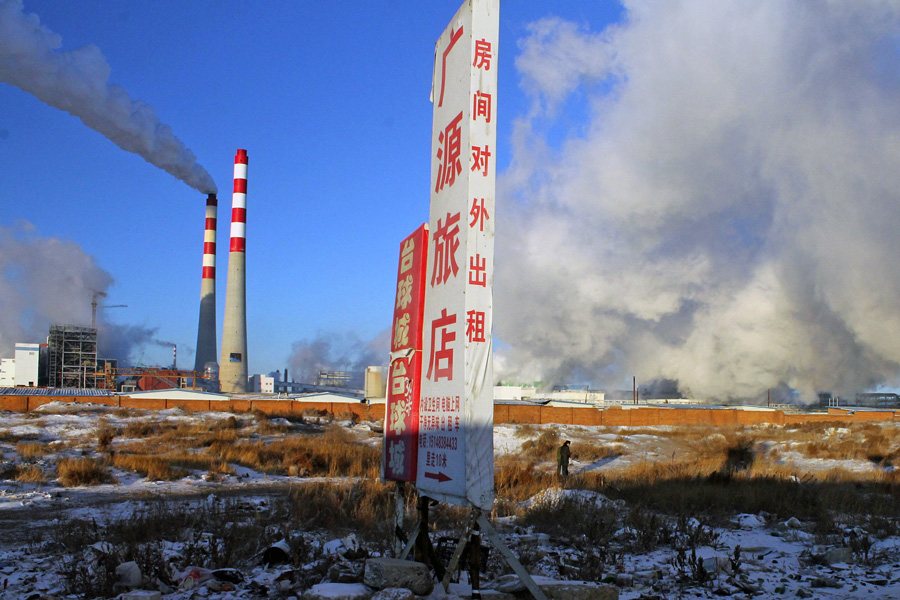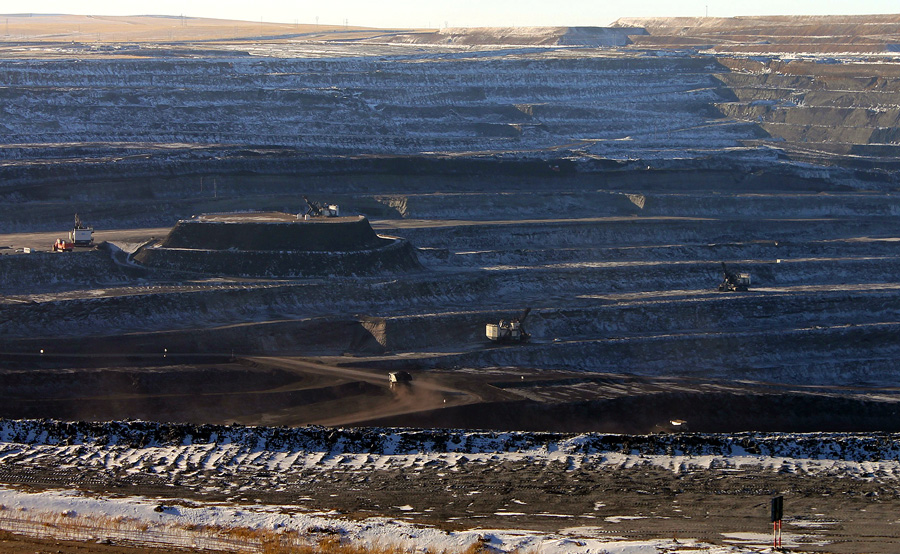-
China’s Coal-to-Gas Plants Trade Urban Air Quality for Higher Carbon Emissions
May 21, 2014 By Hal BerntonLast September, facing a growing public outcry to ease smog, China’s State Council called for the accelerated development of a new energy industry that turns coal into methane gas. Piped to Beijing and other cities, this gas could help cut down on smog by replacing dirtier fuels now used to cook meals, heat homes, and produce electricity. But embracing it involves a major environmental trade-off in overall carbon emissions.
“We Will Declare War Against Pollution”
The government’s decision to move ahead with large-scale development of coal-to-gas plants reflects the urgency that the Chinese leadership feels to make progress on urban air pollution. “We will declare war against pollution and fight it with the same determination we battled poverty,” announced Li Keqiang, China’s prime minister in a speech this year to the National People’s Congress.
Turning coal into gas generates up to 82 percent more carbon dioxide than burning coal directlyAt least 18 coal-to-gas plants have obtained initial approvals, according to an analysis by the World Resources Institute, and dozens of others have been proposed as part of the effort to step up China’s use of cleaner-burning fuels.
The synthetic natural gas produced by these plants produces far less sulfur dioxides, nitrogen oxides, and other pollutants when combusted than coal. Thus, it can help combat the severe urban smog that has emerged as a major public health threat and source of citizen discontent in Beijing and other large cities.
But these coal-to-gas plants are a step back in the global struggle to control carbon emissions. A study of life-cycle emissions published last year in Energy Policy found that producing, transporting, and combusting this gas generates up to 82 percent more carbon emissions than burning coal directly, which already is the most carbon-intensive method for generating power in widespread use. The four co-authors, from Ford Motor Company and Tsinghua University, noted the urgent need for China to reduce carbon emissions and concluded that coal-to-gas plants would not accomplish that task.
China generates more carbon emissions each year than any other nation in the world. If all the coal-to-gas plants with initial government approval are built, they could boost the nation’s annual carbon emissions by more than seven percent over 2012 levels, according to an analysis prepared for The Seattle Times by a co-author of that study.
A New Kind of Power Plant
The gas plants are part of a broader expansion of the Chinese coal industry in Inner Mongolia and other provinces in the north and west. Their development could help keep China’s annual carbon emissions steady – or edging higher – even as the government cracks down on coal use in 12 populous provinces and dramatically expands reliance on zero carbon fuels such as nuclear energy, hydroelectric, wind, and solar.
Inner Mongolia, China’s largest coal-producing region, is a hub of this industrial development. In the eastern grasslands north of Chifeng, Datang International has been building one of the first gas plants at a cost of more than $4 billion. The new plant is an industrial fortress of boilers, tanks, and towers stretching across a plateau where herders still graze livestock.
Gas flared from the tops of towers, lighting up a ramshackle trailer campDuring a December visit, the plant was wreathed in gray clouds of emissions, and the winds carried a foul smell. Gas flared from the tops of towers, lighting up a ramshackle trailer camp for construction workers and truckers that had sprung up behind the plant.
By contrast, workers on the Datang payroll are housed in new dormitories on a campus just inside the front gate. Meals are served by white-hatted chefs and a recreational center offers badminton and ping pong.
The plant is being built in three stages and is forecast to eventually provide some 1,500 jobs. But it has had problems. A first phase of the plant started operations in December, then shut down in January and did not resume production until this spring because of corrosion problems according to Chinese language news reports, which also noted that an industrial accident killed two workers in January.
Datang did not respond to requests for comment on the plant’s start-up.
In the months ahead, Datang’s troubled startup will be monitored by Chinese government officials to learn more about the technology and economics of turning coal into gas.
Is Coal Still the Future?
Despite the initial government approvals, it is uncertain how many of these plants will come online given growing concerns about carbon emissions as well as the massive water demands that come with the process. “A lot of people in the [Chinese] policy community oppose this,” said William Chandler, research director of the U.S.-based Energy Transition Research Institute. “And they say that the decision is not a done deal.”
But these plants have powerful support from the coal industry. A coal-to-gas plant operating at full capacity can consume more than 20 million tons of coal a year. They can also be built close to mines so the coal doesn’t have to be transported long distances over congested rail lines.
A coal-to-gas plant operating at full capacity can consume more than 20 million tons of coal a yearThat’s all welcome news for an industry that has been stung by China’s economic slowdown. Weakened energy demand has sent the price of coal plunging. In 2013, China’s coal consumption climbed by only 2.6 percent according to the China National Coal Association, far below annual growth rates over the past decade that sometimes topped 10 percent and helped spur the rapid expansion of coal mining in Inner Mongolia.
Last year, as demand weakened, a Shenhua Group mine in Xilinhot experienced a significant decline in coal sales, according to Cheng Xiaoliang, the mine’s vice general engineer. The open pit mine is a canyon-cut like cut that taps into three seams of low-grade brown lignite coal, some of which was sent to the Datang plant for conversion to gas last year.
There is still plenty of coal left to dig, and Cheng remains confident about the future. “I firmly believe that coal is going be the main generating source of energy at least for the next 50 years,’’ he said. “No matter what, China still needs coal.”
Hal Bernton is a staff reporter at The Seattle Times researching a series of stories on the struggle to control carbon emissions. His work has been supported by a Perry and Alicia O’Brien Fellowship at Marquette University in Milwaukee, Wisconsin, where his reporting has been assisted by students from the Diederich College of Communication. Graduate student Zhu Ye assisted in the China series.
Sources: China Business Network, Energy Policy, Inner Mongolia News, The Seattle Times.
Video Credit: “A New Role for Coal in China,” used with permission courtesy of Ye Zhu/Hal Bernton. Photos: Datang coal-to-gas plant and coal mine, used with permission courtesy of Hal Bernton/The Seattle Times.
 A Publication of the Stimson Center.
A Publication of the Stimson Center.





